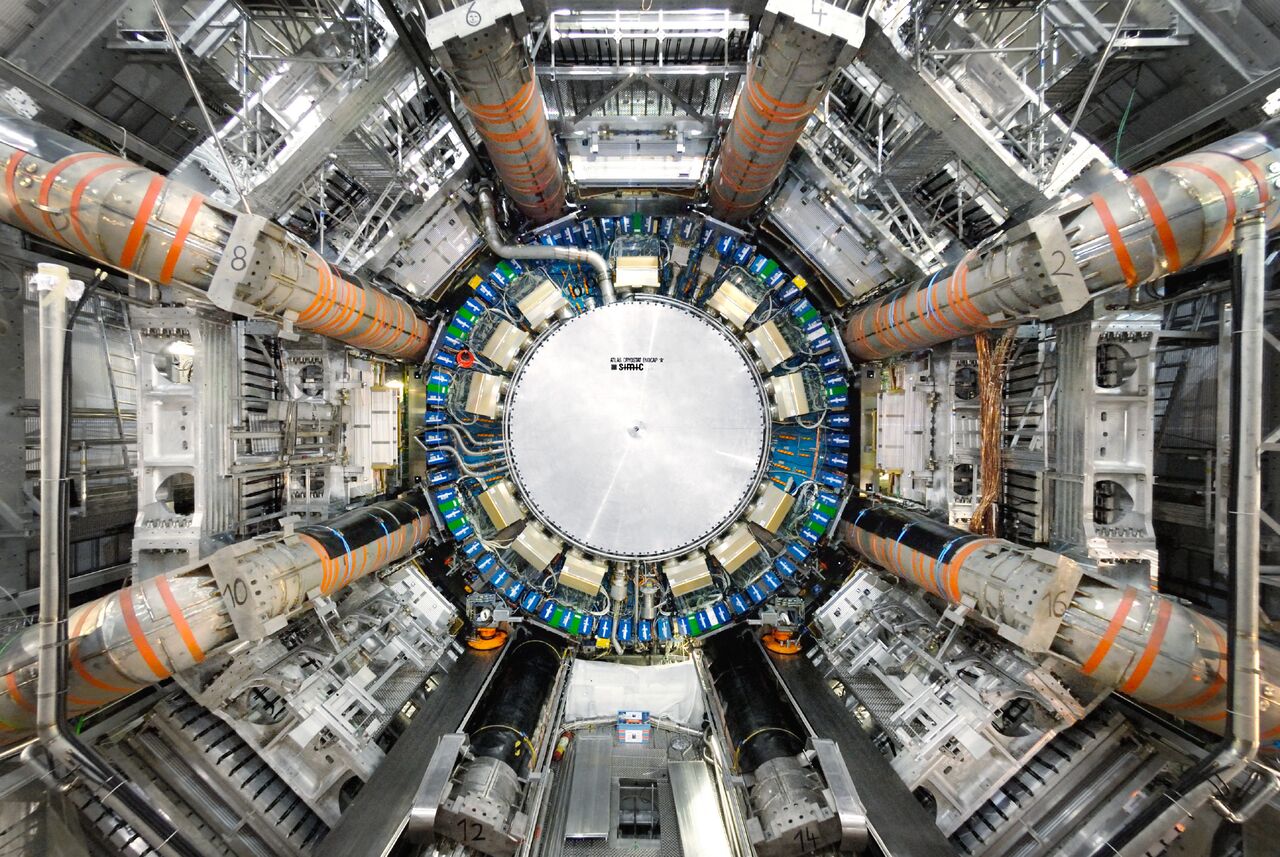
Members of the Berkeley Lab ATLAS group who worked on the analyses related to the observation of Higgs boson production in association with top quarks (top, from left to right): Heather Gray, Haichen Wang, Jennet Dickinson, Hongtao Yang, Fabio Cerutti, and Andrea Gabrielli. Also participating in Berkeley Lab’s analyses (bottom, from left to right): Marjorie Shapiro, Wei-Ming Yao, and Ian Hinchliffe. (Credit: Berkeley Lab)
Jennet Dickinson, a physics researcher at the Department of Energy’s Lawrence Berkeley National Laboratory (Berkeley Lab) and fourth-year graduate student in the physics Ph.D. program at UC Berkeley, is a member of the international collaboration for the ATLAS experiment, a general purpose particle detector at CERN laboratory’s Large Hadron Collider (LHC) in Geneva, Switzerland.
In this Q&A Dickinson explains her role in a new LHC result, announced today, that relates to the Higgs boson, a particle whose discovery was announced six years ago at CERN, and its interaction with another particle, the top quark. The announcement relates to detailed analyses of “tth production,” which is a rare process in which a pair of top quarks emits a Higgs boson.
Q: For how long have you been involved in work at CERN, and how did you become involved in this work? What was your role in this latest result?
A: I’ve been a student with the Berkeley Lab ATLAS group since 2015. I started working on the ttH production process with Berkeley Lab physicist Haichen Wang in the fall of 2016. Our focus has been the Higgs boson’s decay into photons and how this analysis improves with the use of machine learning techniques. More recently, I became involved in the statistical combination with Lab physicist Hongtao Yang.
Q: How did other Berkeley Lab researchers also contribute to this result, and in what areas of expertise did they contribute?
A: The Berkeley Lab ATLAS group played a major role in three of the four analysis groups that participated in this observation, and in the statistical work. We’re very proud to see this result made public.
Q: What were some of the most challenging aspects of this work that you participated in with collaborators, and how did you overcome them?
A: The main challenge for this analysis was the short timeline. This result includes ATLAS data taken up through the end of 2017 and uses new software that became available in the fall. We also introduced a few major improvements to the analysis strategy since last summer. To bring all of this together in only a few months was quite a challenge.
Q: In your view, what is most important about this result?
A: Since the discovery of the Higgs in 2012, a major question for the LHC experiments has been whether its properties agree with predictions. This includes the way that the Higgs interacts with other particles. Until now, the observed Higgs production processes have provided only indirect information on Higgs-quark interactions. The observation of ttH is especially exciting since this is the first direct window into the relationship between the Higgs and the top quark.
Q: What exciting possibilities does this result now raise for future experiments?
A: Observing the process is only the beginning. Now that ttH has been established, we want to dive in and measure the details. This process is particularly challenging because it includes three particles with complex detector signatures: two top quarks and a Higgs boson. Isolating each of these pieces will require the development of new analysis tools and methods. Measurements of each component, as well as the total rate of the process, allow us to determine the level of agreement with theory predictions. Disagreements here could point toward new and unexpected physics.
See related news:
- The Higgs boson reveals its affinity for the top quark (CERN)
- The perfect couple: Higgs and top quark spotted together (Symmetry magazine)
###
Lawrence Berkeley National Laboratory addresses the world’s most urgent scientific challenges by advancing sustainable energy, protecting human health, creating new materials, and revealing the origin and fate of the universe. Founded in 1931, Berkeley Lab’s scientific expertise has been recognized with 13 Nobel Prizes. The University of California manages Berkeley Lab for the U.S. Department of Energy’s Office of Science. For more, visit www.lbl.gov.
DOE’s Office of Science is the single largest supporter of basic research in the physical sciences in the United States, and is working to address some of the most pressing challenges of our time. For more information, please visit science.energy.gov.
